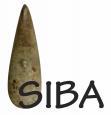Resources
Glossary
Lucayan: derived from the indigenous term lukku-cairi (‘people of the islands’), Lucayan refers to the people inhabiting the islands of The Bahama archiplego and the Turks and Caicos Islands (collectively, the Lucayan archipelago). It is used to distinguish people who have adapted to the unique environment of the archipelago, creating independent societies in permanent settlements.
Meilliacan a culture which thrived in northern Hispaniola, and expanded into Jamaica, Cuba and The Bahamas from about AD 800. Their pottery is distinctive, with unpainted with textured surfaces featuring punctuations as well as rectilinear and cross-hatched designs.
Ostionoid a cultural tradition that developed locally in the Caribbean from ca. AD 600, and including the Meillacan Ostionoid and Palmetto Ostionoid pottery subseries and, eventually (from ca. AD 1200) Chican Ostionoid (or Classic Taíno), pottery subseries. Ostionoid migrants colonised Jamaica and The Bahamas from around AD 600, living in sedentary villages, practicing agriculture and exploiting marine resources.
Palmetto (Palmettan Ostionoid) a ceramic tradition unique to the Lucayan archipelago, incorporating a Bahama red loam paste and a burned, crushed shell temper. The earliest examples appear at the Three Dog Site, San Salvador, ca AD 750, marking an adaptation to the local island environment. Varieties of Palmettan Ostionoid ceramics include Abaco redware and Crooked Island ware.
Saladoid refers both to a ceramic style and the people who produced it. The style first emerged around 2000 BC in the lower Orinoco river valley, Venezuela, spreading to Guiana and eastern Venezuela and by 500 BC to Trinidad, and reaching Puerto Rico shortly thereafter. The pottery is distinctive with white on red (W-O-R) pointed designs or zone-incised cross-hatching (ZIC), with elaborate anthropomorphic and zoomorphic creatures decorating the sides and handles.
Taíno: stemming from taíno, meaning noble and good, a term for the peoples of the Greater Antilles at the time of European contact. Although a convenient umbrella term, it masks the diversity of the cultures living in Hispaniola (today’s Dominican Republic and Haiti), Puerto Rico, Cuba and Jamaica.
Further reading
Berman, M., 2011 Good as gold: the aesthetic brilliance of the Lucayans. In Islands at the Crossroads, edited by L.A. Curet and M.W. Hauser, pp. 104-133, University of Alabama Press, Tuscaloosa.
Berman, M., and P. Gnivecki, 1995 The colonization of the Bahama archipelago: a reappraisal, World Arch 26:421-441.
Keegan, W.F., 1997. Bahamian Archaeology: Life in the Bahamas and Turks and Caicos before Columbus. Media Publishing, Nassau.
___________, 2007. Taíno Indian Myth and Practice: The Arrival of the Stranger King. University Press of Florida, Gainesville.
Klaver, M. et al. 2015. Pb isotope analysis of ng size samples by TIMS equipped with a 1013 resistor using a 207-204Pb spike. J. Anal. Atomic Spectroscopy.
Knaf, A.C. S., J. M. Koornneef and G. R. Davies 2017. “Non-invasive” portable laser ablation sampling of art archaeological materials with subsequent Sr - Nd isotope analysis by TIMS using 1013 Ω amplifiers. Journal of Analytical Atomic Spectrometry. DOI: 10.1039/C7JA00191F
Koornneef, J. et al 2015. TIMS analysis of Sr and Nd isotopes in melt inclusions from Italian potassium-rich lavas using prototype 1013 Ω amplifiers. Chemical Geology, 397, 14–23.
García-Casco, A., et al. 2013. Pre-Columbian jadeitite artifacts from the Golden Rock Site, St. Eustatius, Lesser Antilles, with special reference to jadeitite artifacts from Elliot’s, Antigua: Implications for potential source regions and long-distance exchange networks in the Greater Caribbean. J Arch Sci 40, 3153-3169.
García-Casco, A., et al., 2009. A new jadeitite jade locality (Sierra del Convento, Cuba): first report and some petrological and archaeological implications. Contrib. Mineral. Petrol.158, 1-16.
Harlow, G.E., et al., 2006. Pre-Columbian jadeite axes from Antigua, West Indies: description and possible sources. Can. Mineral. 44, 305-321
Hofman, C. A., 1970. The Palmetto Grove Site on San Salvador, Bahamas. Contributions of the Florida State Museum, Social Sciences, No. 16. Florida State Museum, Gainesville.
Hofman, C. et al, 2007. Island Rhythms: The Web of Social Relationships and Interaction Networks in the Lesser Antillean Archipelago between 400 B.C.- A.D.1492. Latin Am. Antiquity 18 (3), 243–268.
Laffoon, J. E., et al., 2012. Spatial variation of biologically available strontium isotopes (87Sr/86Sr) in an archipelagic setting: a case study from the Caribbean, J Arch Sci 39: 2371-2384.
Laffoon, J. E., et al, 2014. Long-distance exchange in the precolonial Circum-Caribbean: A multi-isotope study of animal tooth pendants from Puerto Rico, J Anth Arch 35:220-233.
Rodríguez Ramos, R., 2011. The circulation of jadeitite across the Caribbeanscape. In Communities in Contact, C. L. Hofman and A. van Duijvenbode, eds., pp. 117-136, Sidestone Press, Leiden.
Rose, R. 1987. Lucayan lifeways at the time of Columbus, Proc. 1st San Salvador Conference, Columbus and His World, Gerace, D. T., ed., pp 321-340, CCFL Bahamian Field Station, Ft Lauderdale, Florida.



